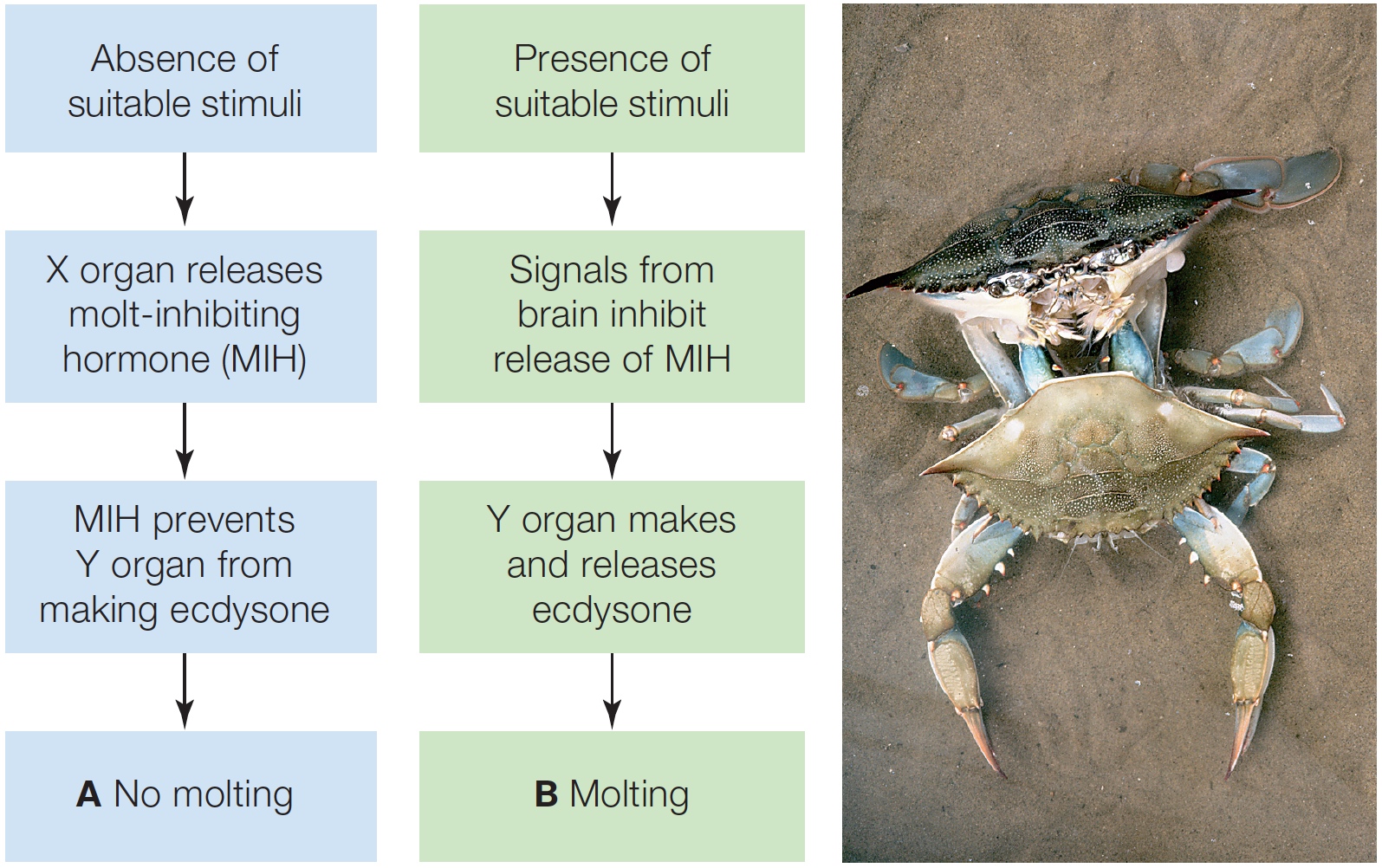 |
| Previous Image | Next Image |
| Description: Two hormone-secreting organs play a role, the X organ in the eye stalk and the Y organ at the base of the antennae. In the absence of environmental cues for molting, hormone from the X organ prevents molting. (b) When stimulated by proper environmental cues, the brain sends nervous signals that inhibit X organ activity. With the X organ suppressed, the Y organ releases the ecdysone that stimulates molting.The photo shows a newly molted blue crab with its old shell. The new shell remains soft for about 12 hours, making it a “soft-shelled crab.” During this time, the crab is highly vulnerable to predators, including human seafood lovers. Two hormone-secreting organs play a role, the X organ in the eye stalk and the Y organ at the base of the antennae. In the absence of environmental cues for molting, hormone from the X organ prevents molting. (b) When stimulated by proper environmental cues, the brain sends nervous signals that inhibit X organ activity. With the X organ suppressed, the Y organ releases the ecdysone that stimulates molting.The photo shows a newly molted blue crab with its old shell. The new shell remains soft for about 12 hours, making it a “soft-shelled crab.” During this time, the crab is highly vulnerable to predators, including human seafood lovers. Absence of suitable stimuli l X organ releases molt—inhibiting hormone (MIH) l MIH prevents Y organ from making ecdysone l A No molting Presence of suitable stimuli l Signals from brain inhibit release of MIH l Y organ makes and releases ecdysone l B Molting Picture Stats: Views: 208 Filesize: 628.64kB Height: 1002 Width: 1595 Source: https://biology-forums.com/index.php?action=gallery;sa=view;id=47643 |
